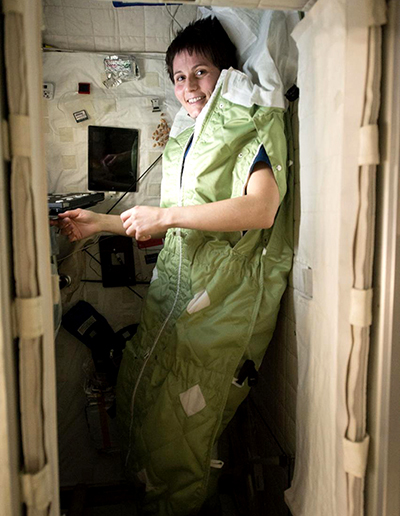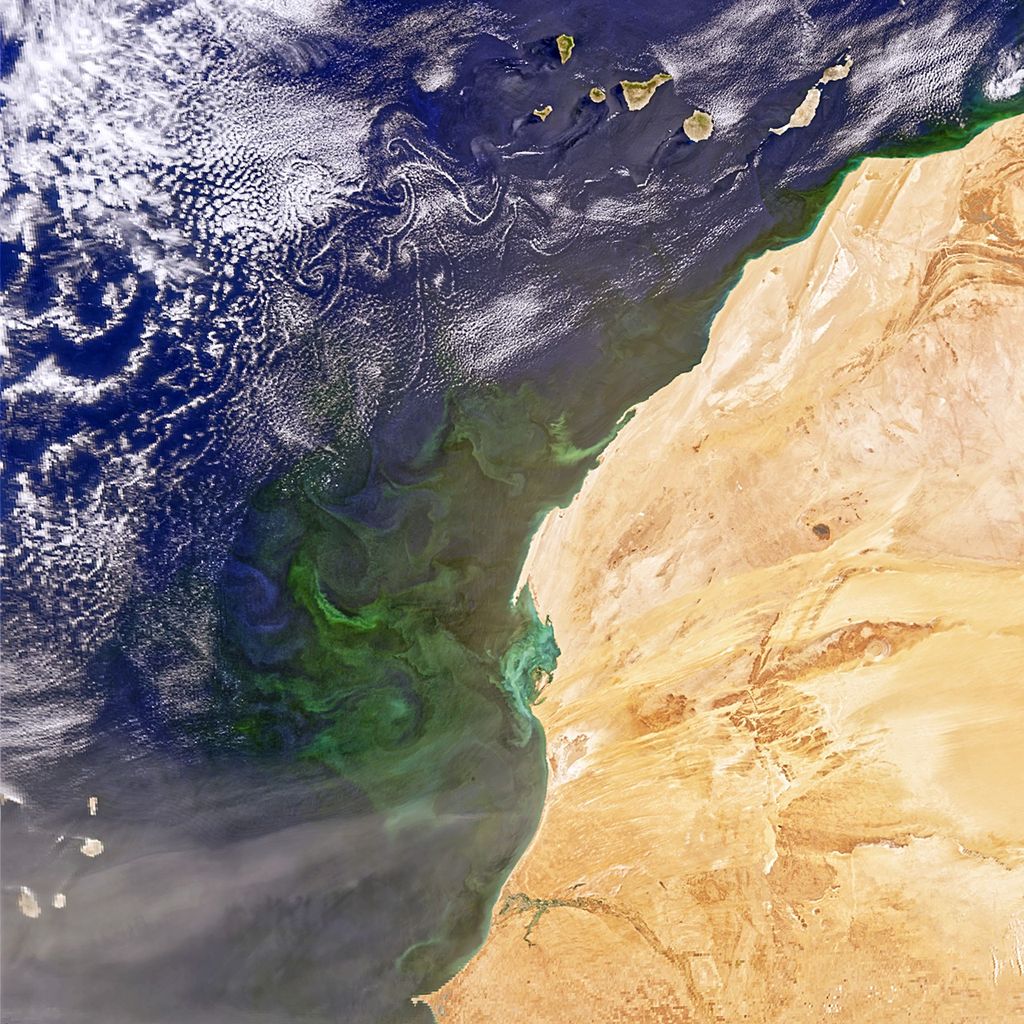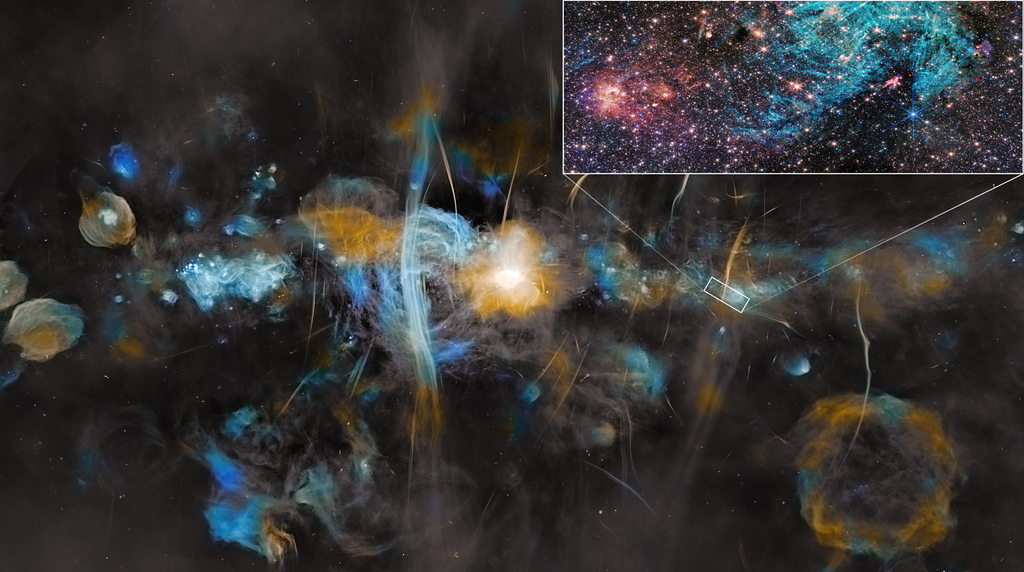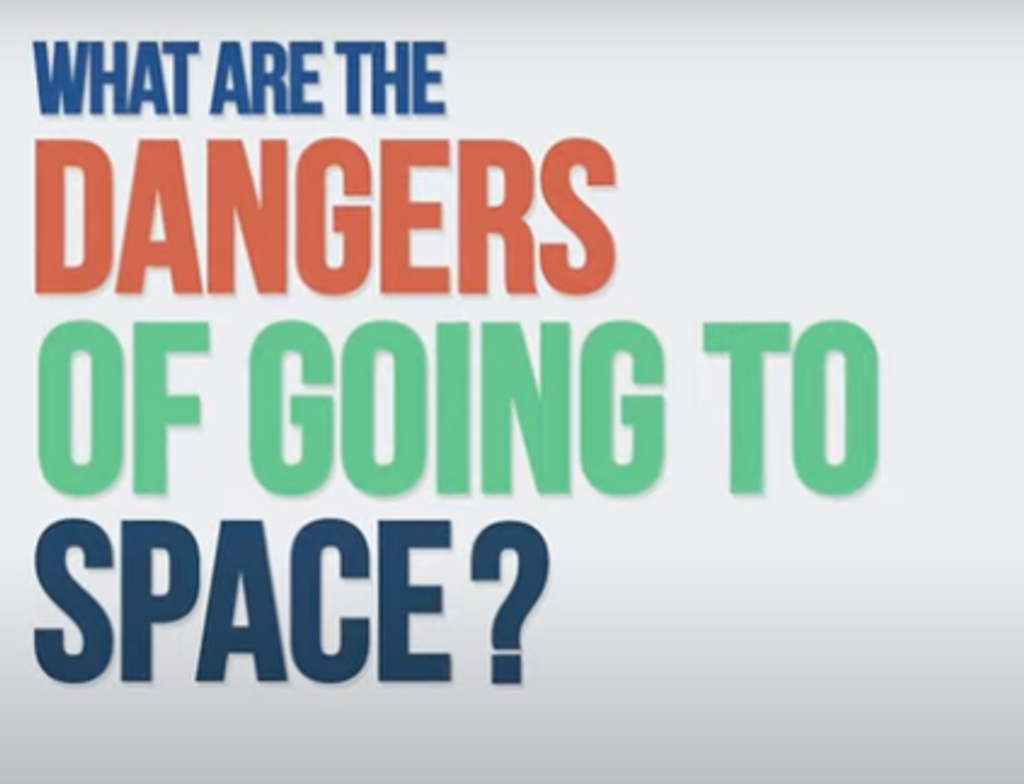Throughout its 20 years of continuous habitation, the International Space Station has enabled great strides in scientific research. But in addition to this knowledge gained, technologies developed for and aboard the orbiting platform have benefited people on the ground, from improving workouts to helping us get a good night’s sleep. Here are a few examples:
Staying Fit in Orbit or at Home
NASA research has shown that exercise is the best way to reduce harm caused by extended stays in microgravity. But this isn’t so easy, since barbells don’t do much good without gravity. Inventor Paul Francis worked with NASA’s Johnson Space Center in Houston to perfect Spiraflex, springs that simulate the tension of lifting a weight without needing a physically heavy object. The springs soon became the basis of an exercise machine that was used on the space station for over a decade. Down here, the same technology also powers exercise machines like the Bowflex Revolution and the OYO fitness portable gym.
But the effects of weightlessness don’t disappear as soon as astronauts are back on solid ground. After they return to Earth, NASA tests astronauts’ sense of balance using a phonebooth-sized system. Making these measurements on the Moon or Mars requires something more portable. Research into miniaturizing this technology eventually resulted in a specialized scale that can help train people to improve their balance and predict when falls are likely.

Keep the Lights Shining
Lack of gravity isn’t the only difference that takes getting used to in space: the lack of a normal day-and-night cycle inside the space station disrupts important biorhythms. NASA has performed extensive research into how different wavelengths of light affect humans and plants. For example, plants on Earth take various cues from sunlight. On the space station, the Advanced Plant Habitat uses an array of light-emitting diodes (LEDs) to simulate sunlight and optimize plant growth. The plant habitat was designed in part by a company called OSRAM, whose Phytofy RL system uses a similar network of lights for plant research on Earth and is now commercially available for researchers.
Astronauts aboard the space station need special light of their own to maintain a regular sleep schedule. Orbiting Earth every 90 minutes, the space station experiences 16 sunrises and sunsets every day, so its occupants’ circadian rhythms get thrown off. By installing LEDs that can vary the amount of blue light astronauts receive, a 24-hour day can be simulated. After these LEDs proved useful on the station, Florida-based Lighting Science was interested in bringing these innovations to the market. The company’s “Awake and Alert” and “Goodnight” bulbs use the same principles as the station’s lights to help people work through the day and then prepare for bed.
Sustaining Life in Space and on Earth
A good night’s sleep is important, but clean water is crucial to sustaining life. Aboard the space station, most, if not all water is recycled from existing moisture sources, but the filters could always be improved. Danish company Aquaporin A/S, which was developing filters that employ the same proteins that living kidney cells use to clean water through osmosis, saw an opportunity to collaborate with NASA. Aquaporin’s filters were sent to the space station to be tested, and the proteins were able to last for more than a year in space.
Space station testing is also helpful in other aspects of human health. For example, in 2011, biotechnology company Amgen teamed up with NASA to study a treatment for osteoporosis – work more easily accomplished during a stay in space, which can intensify bone deterioration. Mice injected with an antibody to inhibit production of the protein sclerostin spent two weeks on the space station. Upon their return, the mice were found to have increased bone formation and improved bone structure. In 2019, a sclerostin antibody treatment for fragile bones was approved by the U.S. Food and Drug Administration.
Bringing Enterprise to Space
After two decades of humans in orbit, what does the future of the space station entail? With NASA shifting focus to the Moon and beyond, commercial companies are helping to expand the space station and open its capabilities to more organizations. In the mid-2000s, the company Nanoracks, with expert support from NASA, began using lockers on the space station to hold small experiments. These NanoLabs became operational in 2010, with research users ranging from high schools to pharmaceutical companies.
After these experiments proved to be a success, Nanoracks has more opportunities arriving on the station: its Bishop Airlock designed for CubeSat deployment and automated experiments is due to arrive to the orbiting laboratory in late 2020.
Similarly, Kentucky-based Space Tango, with NASA support, has installed its TangoLabs on the station. These suitcase-sized facilities hold multiple tiny experiments, run from the ground by the company. Customers include Budweiser, looking to grow barley in space, and LambdaVision, which is leveraging the benefits of microgravity to construct retinal implants.
These are just a couple of examples of the many commercial research platforms now operating on the space station. The ISS U.S. National Laboratory, managed by the Center for the Advancement of Science in Space, supports many commercial platforms as well as research conducted on the station with a focus on improving life on Earth.
Through 20 years of astronauts maneuvering through its modules, the International Space Station has helped to further knowledge of space and Earth, improved our understanding of life, and enabled leaps in commercial technology and medicine, and it will continue to do so for many more years.
NASA has a long history of transferring technology to the private sector. The agency’s Spinoff publication profiles NASA technologies that have transformed into commercial products and services, demonstrating the broader benefits of America’s investment in its space program. Spinoff is a publication of the Technology Transfer program in NASA’s Space Technology Mission Directorate.
For more information on how NASA brings space technology down to Earth, visit:
Andrew Wagner
NASA’s Spinoff Publication

















/quantum_physics_bose_einstein_condensate.jpg?w=1024)













